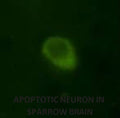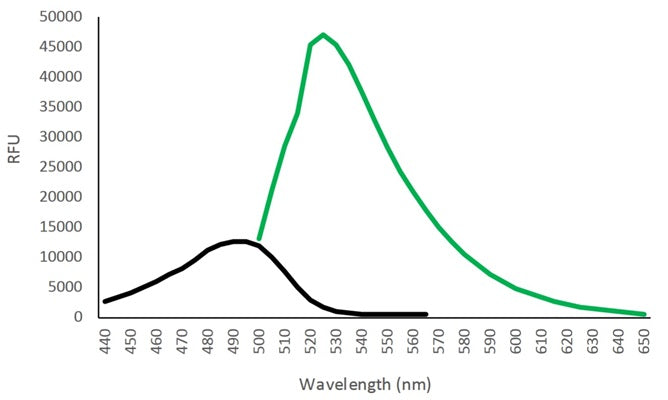Ships: 1-2 business days
- Prepare samples and controls.
- Dilute 10X Injection Buffer 1:10 by adding 45 mL diH20.
- Reconstitute FAM-FLIVO with 50 µL DMSO.
- Dilute FAM-FLIVO 1:12 with 550 µL 1X Injection Buffer.
- Inject 100 µL intravenously.
- Let FAM-FLIVO circulate 30-60 minutes.
- View live tumor through a window chamber using a fluorescence microscope.
- If not viewing directly, excise tissue.
- If desired, label with additional stains, such as Hoechst 33342, or an antibody.
- If desired, fix cells.
- Analyze with a fluorescence microscope, flow cytometer, or a window chamber system. FAM-FLIVO excites at 492 nm and emits at 520 nm.
Kit 980 6 Tests:
FAM-FLIVO® Poly Caspase Inhibitor (FAM-VAD-FMK), 1 vial, #6218
10X Injection Buffer, 5 mL, #6220
Kit Manual
Kit 981 24 Tests:
FAM-FLIVO® Poly Caspase Inhibitor (FAM-VAD-FMK), 4 vials, #6218
10X Injection Buffer, 5 mL, #6220
Kit Manual
Product Specific References
| PMID | Publication |
| 38197946 | Peng, V., et al. 2024. Inositol phosphatase INPP4B sustains ILC1s and intratumoral NK cells through an AKT-driven pathway. The Journal of experimental medicine. |
| 38112058 | Costigan, A., et al. 2023. Discriminating Between Apoptosis, Necrosis, Necroptosis, and Ferroptosis by Microscopy and Flow Cytometry. Current protocols, e951. |
| 36896789 | Han, Z., et al. 2023. Irisin attenuates acute lung injury by suppressing the pyroptosis of alveolar macrophages. International journal of molecular medicine. |
| 37036426 | Yamada, T., et al. 2023. TIGIT mediates activation-induced cell death of ILC2s during chronic airway allergy. The Journal of experimental medicine. |
| 37603766 | Kroll, K.T., et al. 2023. Immune-infiltrated kidney organoid-on-chip model for assessing T cell bispecific antibodies. Proceedings of the National Academy of Sciences of the United States of America, e2305322120. |
| 36271147 | Wu, R., et al. 2022. Mechanisms of CD40-dependent cDC1 licensing beyond costimulation. Nature immunology. |
| 36499277 | von Amsberg, G., et al. 2022. Salvage Chemotherapy with Cisplatin, Ifosfamide, and Paclitaxel in Aggressive Variant of Metastatic Castration-Resistant Prostate Cancer. International Journal of Molecular Sciences, 14948. |







